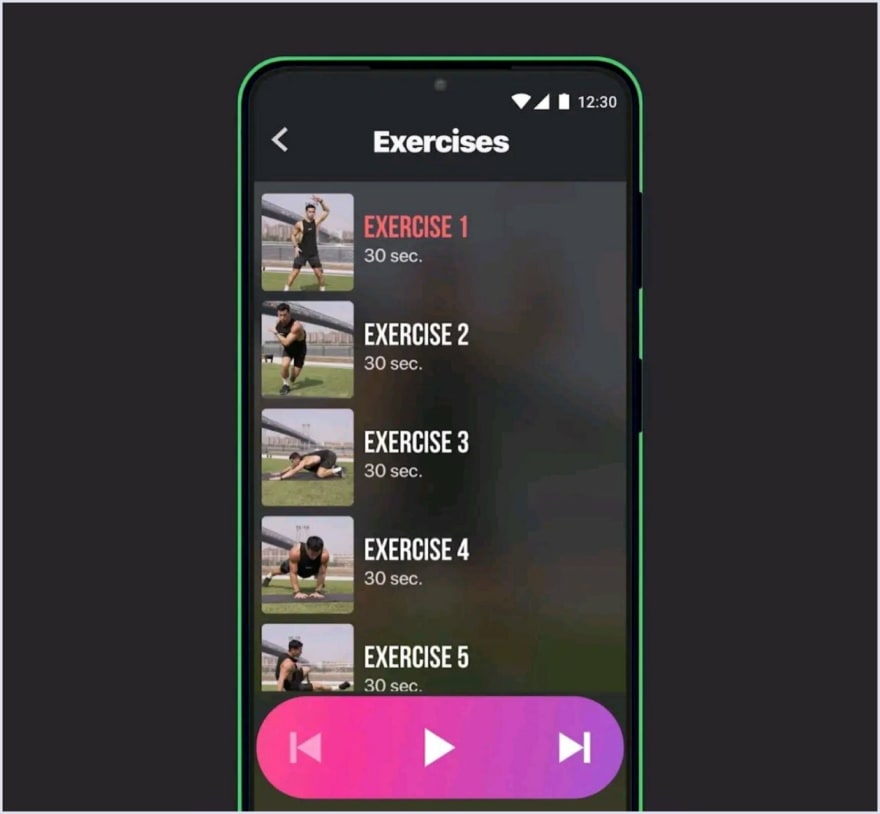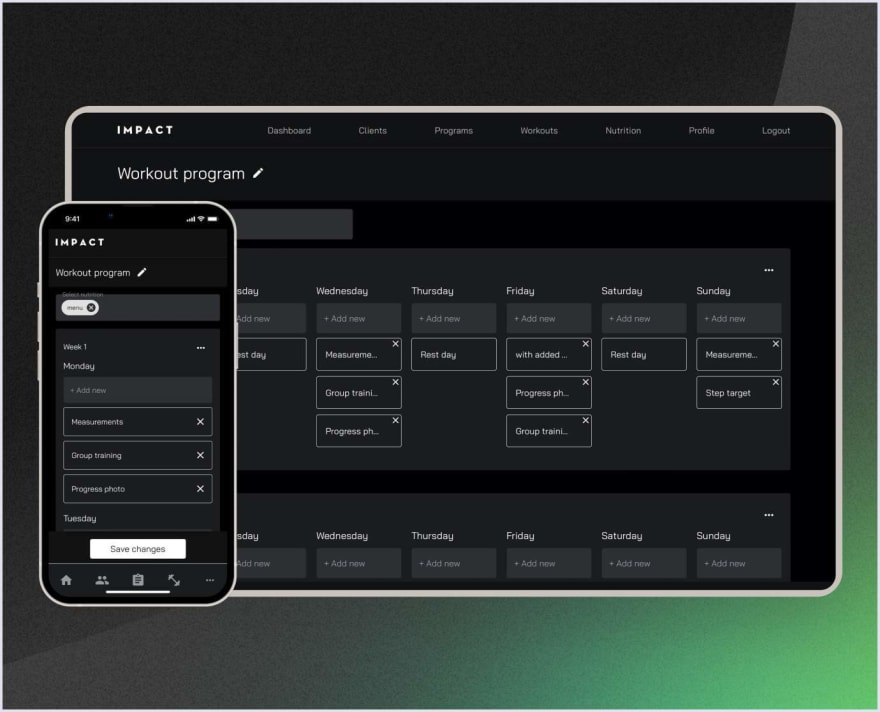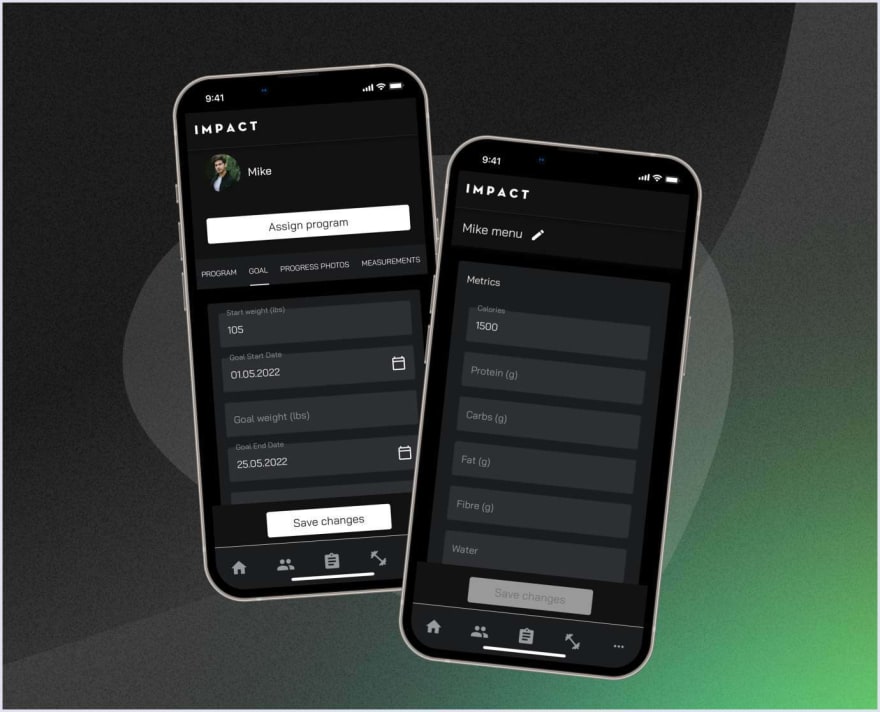How to Develop a Fitness App

Codica
Posted on July 13, 2022
This article was originally published on Codica blog.
The fitness apps’ downloads reach millions globally. People like using these apps to track activity, sleep quality, heart rate, or amount of calories consumed.
In this article, we consider challenges when making a fitness app, what features are needed to add to it and share Codica’s experience in successfully developing one.
Fitness app market
As Statista’s report demonstrates, the fitness app segment modifies as follows:
- The fitness app sector revenue is predicted to gain $16.60 bn in 2022;
- The average income per user is forecasted to be $24.41.
- It is projected that the annual growth rate in 2022-2026 will be 16.18%, with market size of $30.24bn by 2026.
Best fitness apps
Over 70,000 fitness apps were started on App Store and Google Play Store by 2022. Let’s see what the most popular apps on these resources are.
- Google Fit: Activity Tracking (100+ million downloads),
- MyFitnessPal: Calorie Counter (100+ million downloads),
- FitBit (50+ million downloads),
- Strava (50+ million downloads),
- WW (formerly Weight Watchers) (10+ million downloads),
- Muscle Booster (25+ million downloads),
- Home Workout - No Equipment (100+ million downloads),
- Zepp Life (formerly MiFit) (100+ million downloads).
How you can get income with a fitness app
Fitness apps can make a profit millions. For example, in 2022, MyFitPal brought almost $9,000,000 in profit.
So, how can you make money from your app?
Paid apps. Before gaining access to the app, users need to pay for it.
In-app purchases. This model means that you provide your app partly for free. After gaining a certain audience, you can offer premium experiences as in-app purchases.
In-app advertisements. If you distribute your app freely, you can assume users purchase items with your app. For example, it can be a personal nutrition plan.
Ads. Your app may generate profit if you cooperate with other fitness-related businesses. Usually, the fitness app comprises a cost-per-mille or cost-per-click commission.
Sponsored content. Also, you can collaborate with fitness experts and share their content in your application for a certain charge.
5 steps when building a fitness app: Codica’s practice
Let’s see what development stages we follow at Codica and how they assist in delivering a fitness app of great quality.
Stage 1. Product discovery
The product discovery phase is a stage when you describe the main idea of your app to the development team and discuss it. Based on the outcomes of the discovery phase, the team plans your app’s architecture, features, and design.
Stage 2. Prototyping and UX design
Drafts and prototypes represent the structure and flow of the app. They are needed to demonstrate the arrangement of the app’s fields, menus, and buttons.
Stage 3. Workout app creation
We recommend starting the development process by creating a minimum viable product (MVP). MVP is a workable product version with basic features. Using MVP, you can see how people respond to your product and what they want to see enhanced.
Our team uses Ruby on Rails, JavaScript, and their frameworks to cover the back-end and front-end. Also, we add third-party integrations to make the app secure and robust.
We apply the Agile methodology in our development process. When creating a web project, we move in iterations. So, the customer and development team can see that the app creation is moving in the right direction.
Stage 4. Quality assurance (QA) and optimization
After creating the product, we test and refine it to deliver the top result.
Stage 5. Maintenance and support
After the fitness app development, the team provides tech support for the product, updates and improves the app, and integrates new functionality.
Key features in fitness apps
User profile
Usually, a user profile comprises the factors that assist in personalizing training (activity level, age, and so on). The user profile should enable users to enter the following data:
- Workout goal;
- Weight goal;
- Progress dashboards;
- Nutrition preferences.
Workout catalog
This catalog is the core of any workout app. Try to create an app with the following points for this feature:
- Simple switching between exercises;
- Equipment, time, and description for each exercise;
- Text-to-speech tool for voice tips;
- Workouts calendar.
Here, you can see an example of exercises demonstrated by the VGFIT app.
Source: vgfit.com
Maps with routes
This feature is needed when you develop an app for tracking the users’ activities. Add the following aspects to the routes:
- Highlighting the points of the route that the user passed;
- Providing data on the movement and calories burned speed;
- Weather forecast integrations;
- Point to the efficiency of the workout.
Notifications
Take into account the following aspects for notifications:
- Notifications should be concise;
- Enable users to manage and personalize notifications;
- Add a log of notifications enabling users to monitor their activities.
Calorie counting and nutrition plans
We recommend including the following options:
- Bar code and food scanning that allow an instant count of calories;
- Tracking water intake;
- Dynamic adjustment of recommended meals.
Source: MyFitnessPal: Calorie Counter
Integration with music services
When you add integration with the audio streaming service, include the following:
- Let users pick the pieces that fit their workout tempo;
- Provide users with an opportunity to create playlists;
- Bring up the tracks that assisted users in achieving better results.
Integration with educational materials
Сonsider the following aspects:
- Offer concise video, audio, or blog pieces;
- The content must relate to your users’ interests;
- Customize the offered content to the users’ workout results.
Integration with wearable devices
Fitness app development also comprises integration with smart devices, such as smartwatches, fitness trackers, and heart rate monitors. By the way, in 2021, the activity tracking wrist-wear market had about 206.4 million users globally.
Social media sharing and leaderboards
Sharing results on social media and leaderboards motivates people to do more. So, include these features when creating a fitness app.
Overview of Impact Fitness App by Codica
How it started
Impact Personal Training is a fitness gym based in the United Kingdom. The facility gathered experts who create nutrition and personal exercise programs for clients.
During the COVID-19 outbreak, Impact’s clients could not attend the gym. So, Impact has provided an opportunity to stay fit while being at home.
Functionality for clients
Exercises for personal fitness programs
We added an easy-to-use menu with exercises in the Impact app. Each exercise comprises a full description and video of how to do them right.
Training management
We added a convenient dashboard demonstrating the training scale, workout plan, and the client’s progress.
Nutrition programs
Impact comprises features that allow clients to point out the food eaten on their plan. Furthermore, this nutrition program reflects the nutrition components.
Functionality for trainers
Training management
We developed a helpful dashboard for trainers. The dashboard enables selecting clients from the list and picking the most relevant exercises for them.
Management of nutrition programs
The app management system enables trainers to set and change client nutrition plans. The system comprises features that assist trainers in monitoring the progress of clients.
Tech stack used at Codica to develop a fitness app
Impact Personal Training comprises the following technologies:
- React,
- Ruby on Rails,
- PostgreSQL,
- Sidekiq,
- Amazon Web Services.
We also used the following integrations:
- Gitlab,
- Dropbox,
- Sentry.
How much does it cost to make a fitness app?
The exact time-frames and price of the app creation depend on the features and rates of your development partner. An approximate time and cost for the app development process will take 1328 hours and cost $66,400.
Conclusion
Developing a fitness app is complex regarding the variety in this market sector. However, it is worth the effort.
Now, you are armed enough with our tips that will help you to create a fitness app that meets people’s needs.

Posted on July 13, 2022
Join Our Newsletter. No Spam, Only the good stuff.
Sign up to receive the latest update from our blog.






